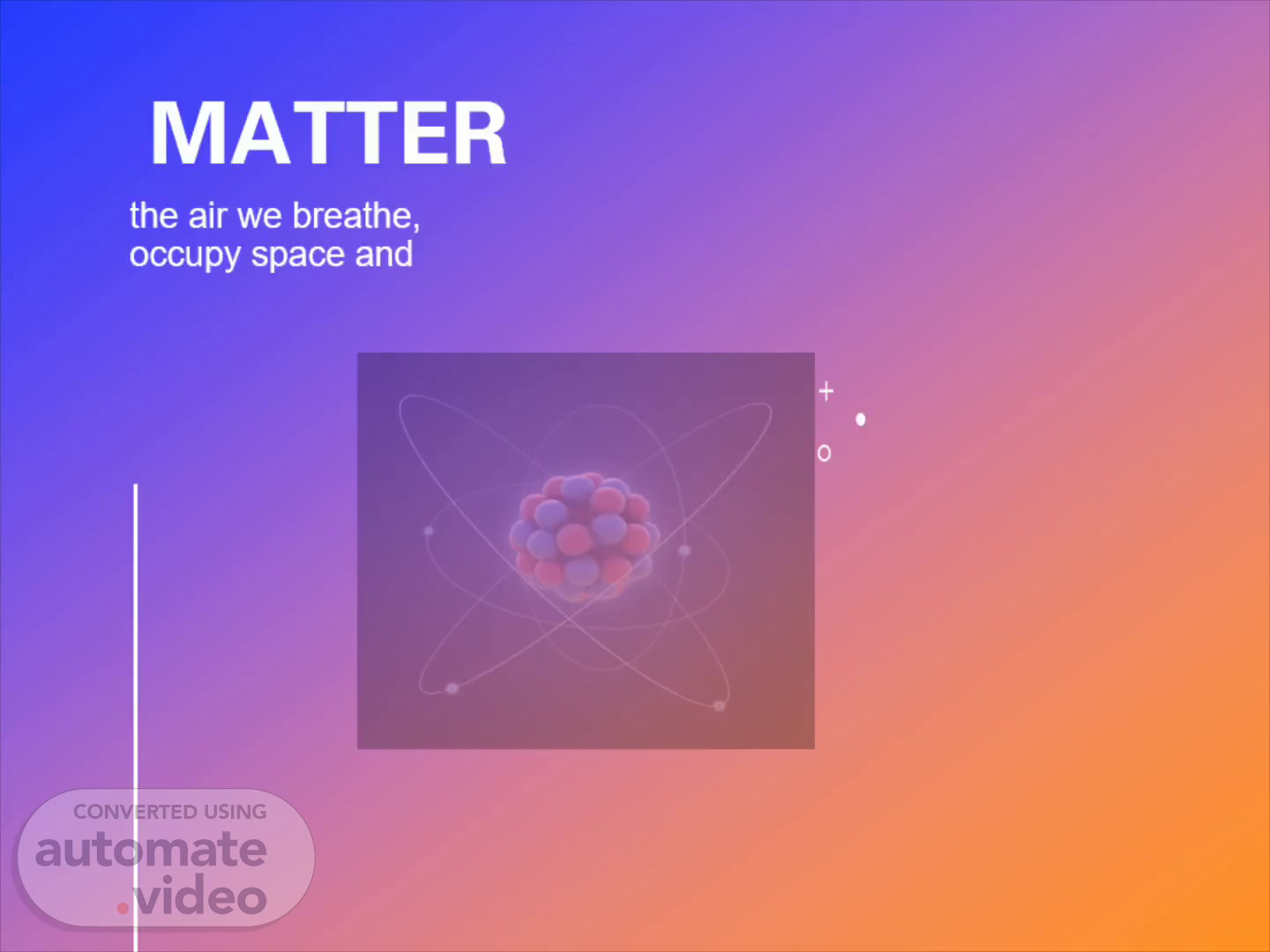Page 1 (0s)
matter. the air we breathe, the food we eat planets all living being, etc. which occupy space and mass which scientists named the matter.
Page 2 (13s)
there are 4 states of matter. Solid- solid is one of the four fundamental states of matter (the others being liquid, gas, and plasma). The molecules in a solid are closely packed together and contain the least amount of kinetic energy. A solid is characterized by structural rigidity (as in rigid bodies) and resistance to a force applied to the surface..
Page 3 (55s)
Plasma. plasma , in physics , an electrically conducting medium in which there are roughly equal numbers of positively and negatively charged particles , produced when the atoms in a gas become ionized. It is sometimes referred to as the fourth state of matter , distinct from the solid , liquid , and gaseous states. The negative charge is usually carried by electrons , each of which has one unit of negative charge. The positive charge is typically carried by atoms or molecules that are missing those same electrons. In some rare but interesting cases, electrons missing from one type of atom or molecule become attached to another component, resulting in a plasma containing both positive and negative ions. The most extreme case of this type occurs when small but macroscopic dust particles become charged in a state referred to as a dusty plasma , The uniqueness of the plasma state is due to the importance of electric and magnetic forces that act on a plasma in addition to such forces as gravity that affect all forms of matter. Since these electromagnetic forces can act at large distances, a plasma will act collectively much like a fluid even when the particles seldom collide with one another..
Page 4 (1m 52s)
5 • Dark Energy • Dark Matter Ordinary Matter. percentage of matter in the universe.
Page 5 (2m 0s)
Dark matter. Dark matter can refer to any substance which interacts predominantly via gravity with visible matter (e.g., stars and planets). Hence in principle it need not be composed of a new type of fundamental particle but could, at least in part, be made up of standard baryonic matter, such as protons or neutrons ..
